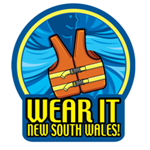 A number of reports have been written over many years researching the past history and proposing new paths for the wearing of Personal Flotation Devices (PFDs) and Lifejackets.
A number of reports have been written over many years researching the past history and proposing new paths for the wearing of Personal Flotation Devices (PFDs) and Lifejackets.
These include:
- October 2007- Australian Personal Floatation Devices (PFD) Wear Rate Study 2007
-
This report provides data and analysis on the 2006/2007 Personal Flotation Device (PFD) Benchmark Observation Study, which is the first major study on PFD wearing rates to be published in Australia. Published by the National Marine Safety Committee, October 2007
- August 2010 National Boating Usage Study – Trip Analysis
- More than 2,000 recreational boaters in Australia completed trip diaries for boating activitiesconducted between 1 October 2008 and 31 March 2010. These boaters logged 32,100 trips and 300,053 hours on a wide variety of Australian waterways. During that period the number of participating boaters dropped from 2,818 – those who completed the preliminary survey, to 2,035 – those who completed the trip diaries.
- August 2010 National Boating Usage Study – Executive Summary
- Recreational boating is a popular activity in Australia with millions of Australians regularly taking to Australian waters. With almost a million recreational craft throughout Australia taking part in a wide range of activities such as fishing, cruising, diving, sailing and water skiing it is necessary to develop informed policy and educational programs so the potential for boating accidents is minimised.
- December 2009 National Boating Usage Study Preliminary Survey Report (December 2009)
- In the period between 1992 and 2004 574 Australians lost their lives in boating accidents. The National Marine Safety Committee commissioned the National Recreational Boating Usage Study to collect information about recreational boating that can be used to provide an evidence base upon which to develop better marine safety policies and education programs.
- This report examines boating incidents recorded within the State of NSW over the 10-year period 2002–03 to 2011–12, with an emphasis on recreational boating incidents. It aims to highlight differences in safety outcomes with respect to a range of risk related factors such as vessel type, time of day and type of waterway, in order to identify areas to address through education, policy or legislative change. The report also examines incident trends through time as a way of inferring any long-term changes in safety outcomes.
- Transport Safety Victoria Maritime safety incident and demographic statistics July – December 2012

- Victoria’s marine operators are required to report certain types of marine incidents to Transport Safety Victoria (TSV) under the Marine Safety Act 2010 (Vic)(Marine Safety Act). Under section 173(1)(i) of the Transport Integration Act 2010 (Vic) one of the functions of the Director, Transport Safety is to “collect information and data about, and commission and sponsor research into, transport safety matters”. TSV uses the data it collects from marine operators to monitor trends and safety risks in the marine environment across Victoria, and identify regulatory interventions accordingly
.




